|
||||
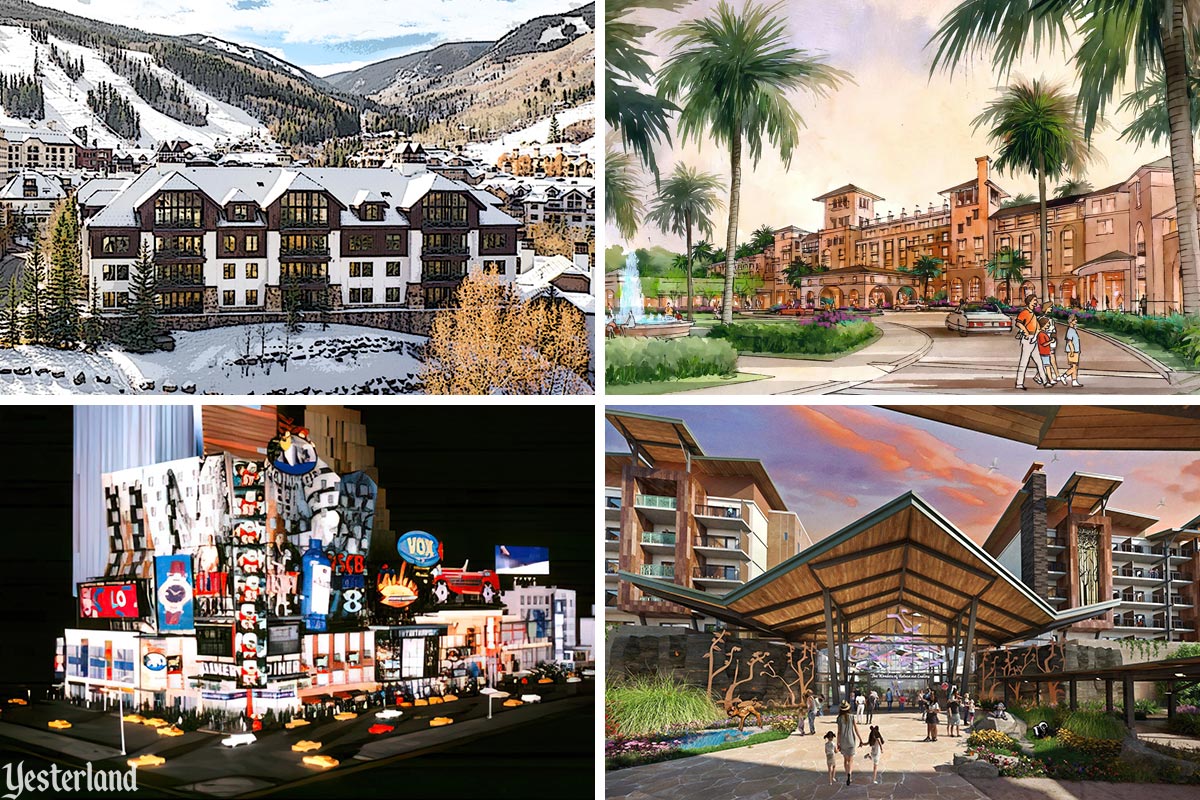
|
||||
|
Some of these four Disney Vacation Clubs that never opened were officially announced. Others were not announced, but also not secret. In cases when Disney didn’t announce a name, I’ve invented names. |
||||
|
|
||||
|
There have been others. Disney officially announced plans for a Disney Vacation Club in Newport Beach, California, in March 1994, but Disney never began construction. There were no public plans for a Disney Vacation Club at Disneyland Paris, only a perfect site at the Disneyland Paris golf course. In both cases, Marriott Vacation Club built beautiful resorts instead of Disney. |
||||
|
1. Disney’s Mountain Lodge in Colorado |
||||
|
Imagine a ski-in/ski-out Disney Vacation Club resort—let’s call it Disney’s Mountain Lodge—in Colorado’s Vail Valley. Visualize two five-story wings with 115 studios, one- and two-bedroom vacation homes, and three-bedroom Grand Villas, emerging from a central five-story atrium lobby. In your imagination, add a fitness center, retail space, and a Community Room. Now, picture a location at Market Square in the Beaver Creek Resort, adjacent to a below-grade 530-seat performing arts theater. Let’s make this fantasy even better by putting a year-round ice skating rink on top of the theater. And let’s imagine easy access to all sorts of shops and restaurants by connecting the whole complex to the Beaver Creek Resort’s pedestrian system, while hiding cars underground in 160,000 square feet of convenient, covered parking. |
||||
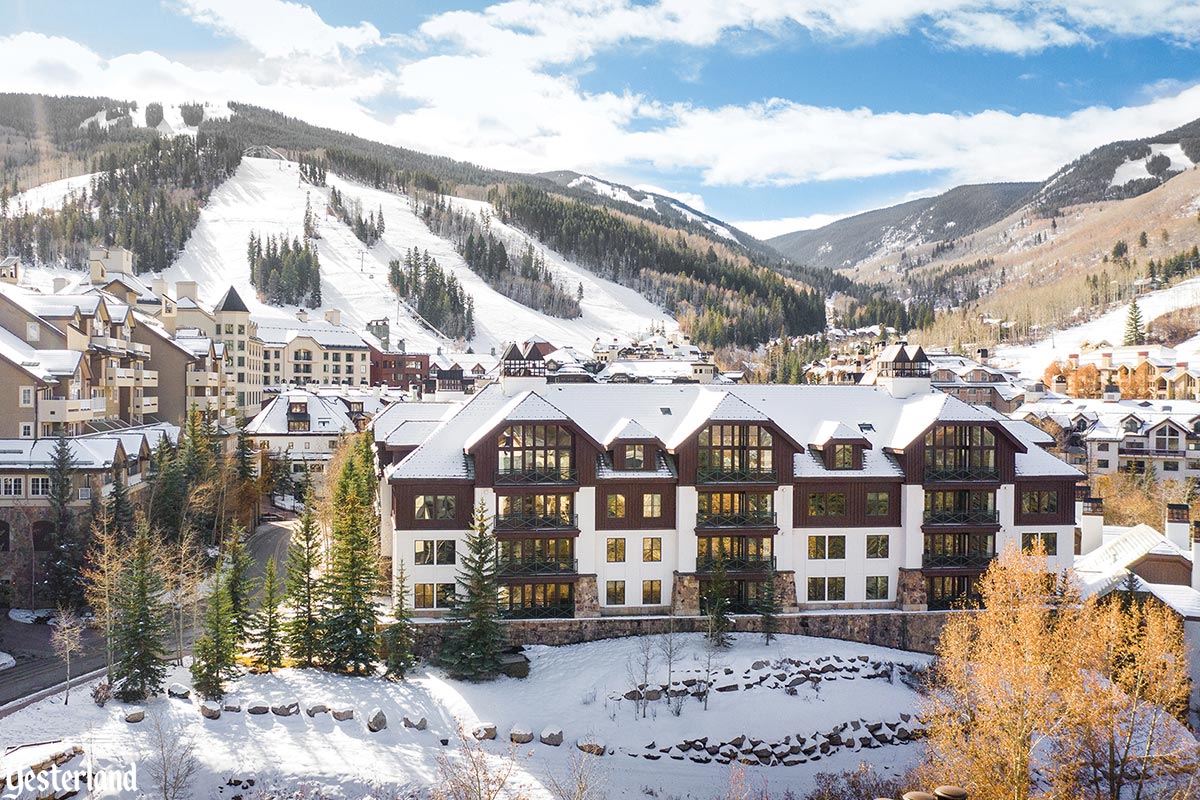
Photo © Hyatt Residence Club Mountain Lodge at Beaver Creek |
||||
|
What a great way to use the last undeveloped piece of property at the Beaver Creek Ski Resort base area master plan! How many DVC points would you like to buy? Disney Vacation Development never announced this project, but it wasn’t a secret. The complex was designed by the architectural firm of Pierce, Segerberg & Associates of Vail, and slated to be built by general contractor G.E. Johnson Construction of Colorado Springs. ABS Consultants, Inc., a mechanical and electrical engineering firm that also worked on Disney’s Grand Californian Hotel and Disney’s Wilderness Lodge, even listed Disney’s Mountain Lodge at Beaver Creek on their website as one of their notable projects. The plan for Disney’s Mountain Lodge isn’t anything recent. It happened around 1994. There was only one operational Disney Vacation Club resort at the time, and it was simply called Disney Vacation Club. That first resort would later be renamed to Disney’s Old Key West Resort, so that Disney Vacation Club could become the brand for a collection of Disney timeshare resorts. The first two off-site resorts would be Disney’s Vero Beach Resort (1995) and Disney’s Hilton Head Island Resort (1996). |
||||
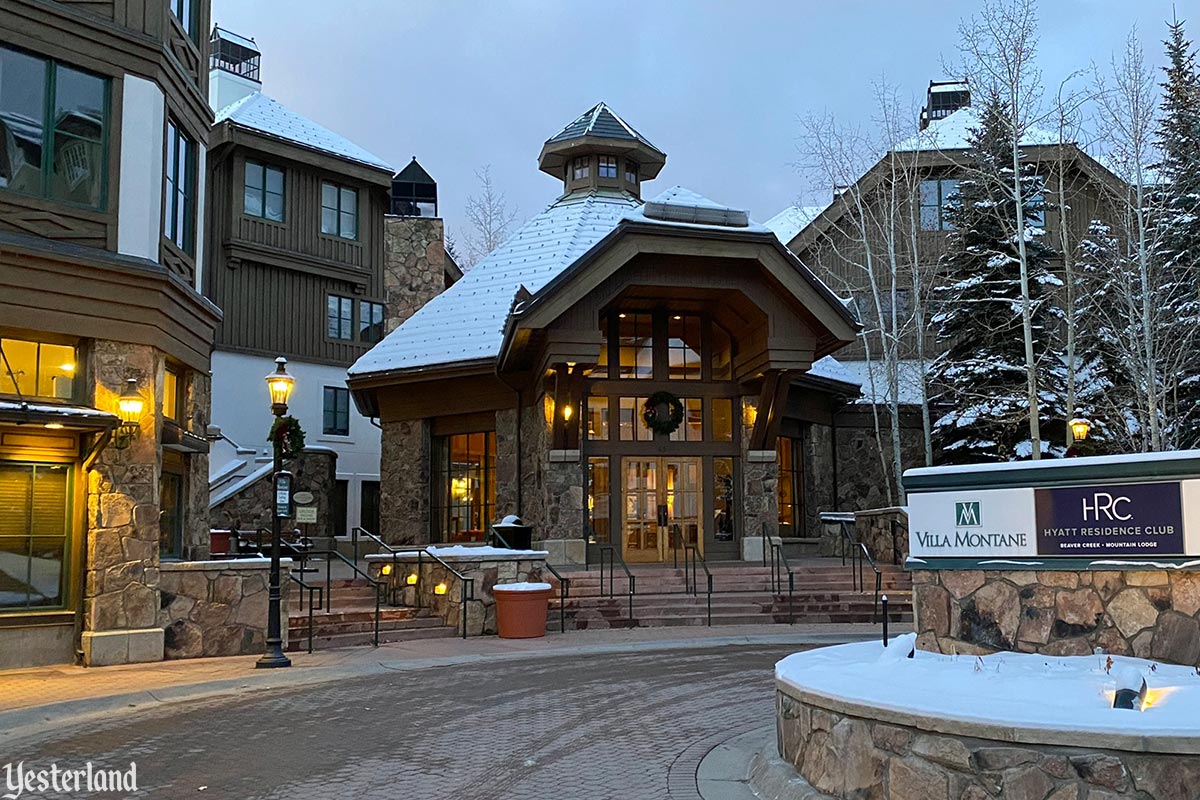
Photo by Bill Zanetti, 2019 Hyatt Residence Club Beaver Creek, Mountain Lodge |
||||
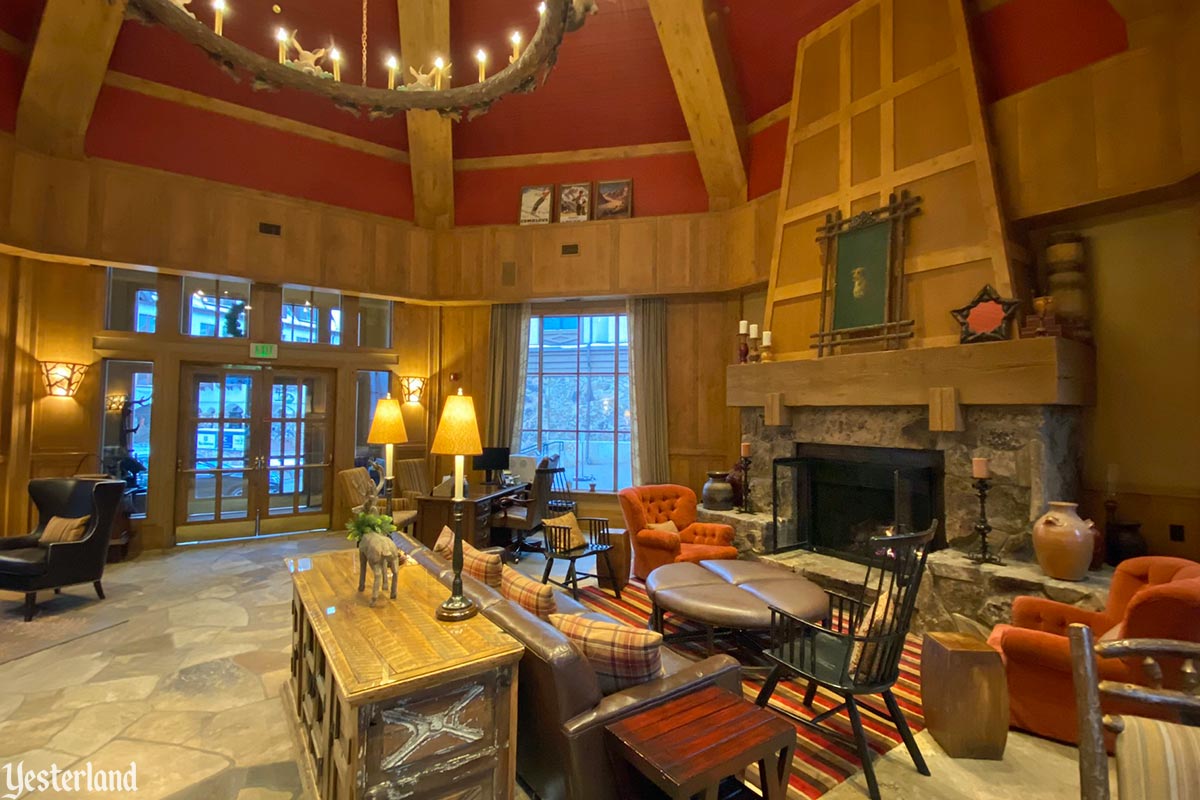
Photo by Bill Zanetti, 2019 Inside the Mountain Lodge |
||||
|
The Mountain Lodge opened for business in 1998—without Disney—as the Hyatt Mountain Lodge, A Hyatt Vacation Club Resort. It’s now called Hyatt Residence Club Beaver Creek, Mountain Lodge. Just as originally planned, the complex includes the 530-seat Vilar Center for the Arts, with the year-round Black Family Ice Rink on its roof. Disney has no reason to explain why an unannounced project did not proceed. We can only speculate. But the reason might have something to do with Disney’s first two off-site Disney Vacation Club resorts. |
||||
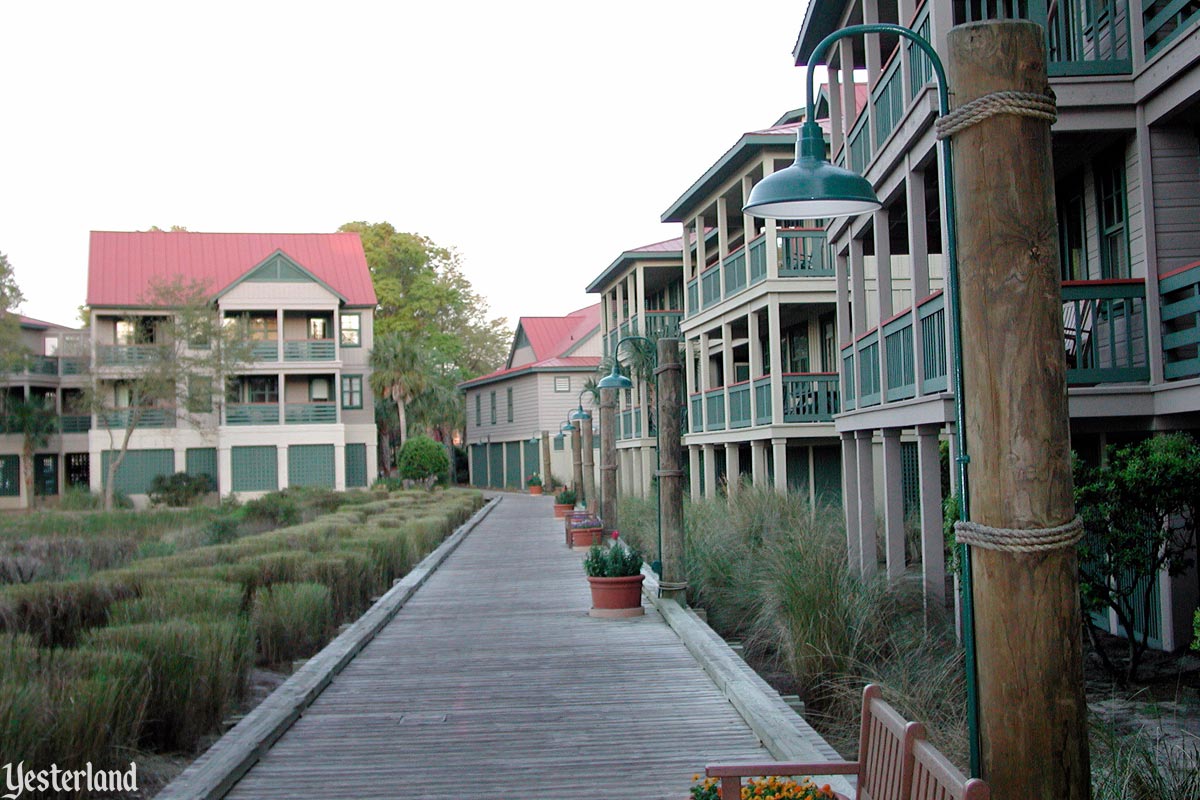
Photo by Werner Weiss, 2007 Disney’s Hilton Head Island Resort, one of two off-site DVC resorts from the 1990s |
||||
|
Ownership points for Disney’s Vero Beach Resort and Disney’s Hilton Head Island Resort sold much more slowly than those for Disney’s Old Key West Resort and Disney’s BoardWalk Villas Resort. At Walt Disney World, Disney had land that the company bought in the 1960s for next to nothing, a ready pool of potential buyers who valued the Disney brand and Disney experience, and low marketing costs. |
||||
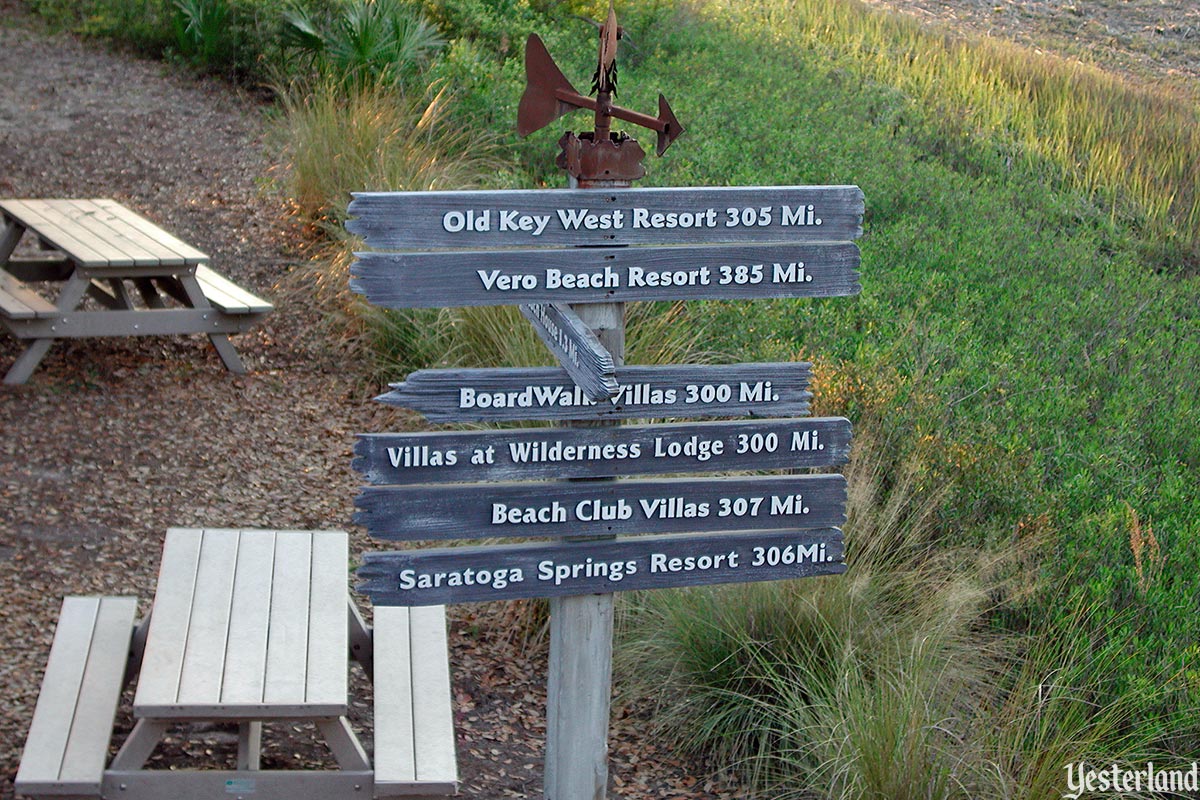
Photo by Werner Weiss, 2007 Sign at Hilton Head Island Resort with distances to other DVC resorts |
||||
|
Off-site, Disney had to deal with expensive land for prime locations, a brand that had less value to the golfers, beach-goers, and skiers who typically buy timeshares, and high marketing costs. The slower sales meant high carrying costs for the unsold inventory. And there wasn’t even a ready market to rent out the unsold inventory for top dollar prices, as Disney could do at Walt Disney World. Eventually, Disney canceled the second phase of Disney’s Vero Beach Resort and sold the undeveloped land. There would be no other Disney Vacation Club resort away from Disney theme parks until the August 29, 2011 opening of Aulani, A Disney Resort & Spa in Ko Olina, Hawai‘i. |
||||
|
2. Disney’s Times Square Villas, New York |
||||
|
Would you like to stay at a Disney Vacation Club hotel on 42nd Street in New York City, just off Times Square in the heart of the Broadway theater district? Once a neglected stretch of urban decay, this is now a great base for visiting the attractions of New York by day and seeing a Broadway show every night, if you can afford it. The New Amsterdam Theatre is on the block across the street. It was restored by The Walt Disney Company, reopened in spring 1997, and has hosted the Broadway musical versions of The Lion King, Mary Poppins, and Aladdin. |
||||
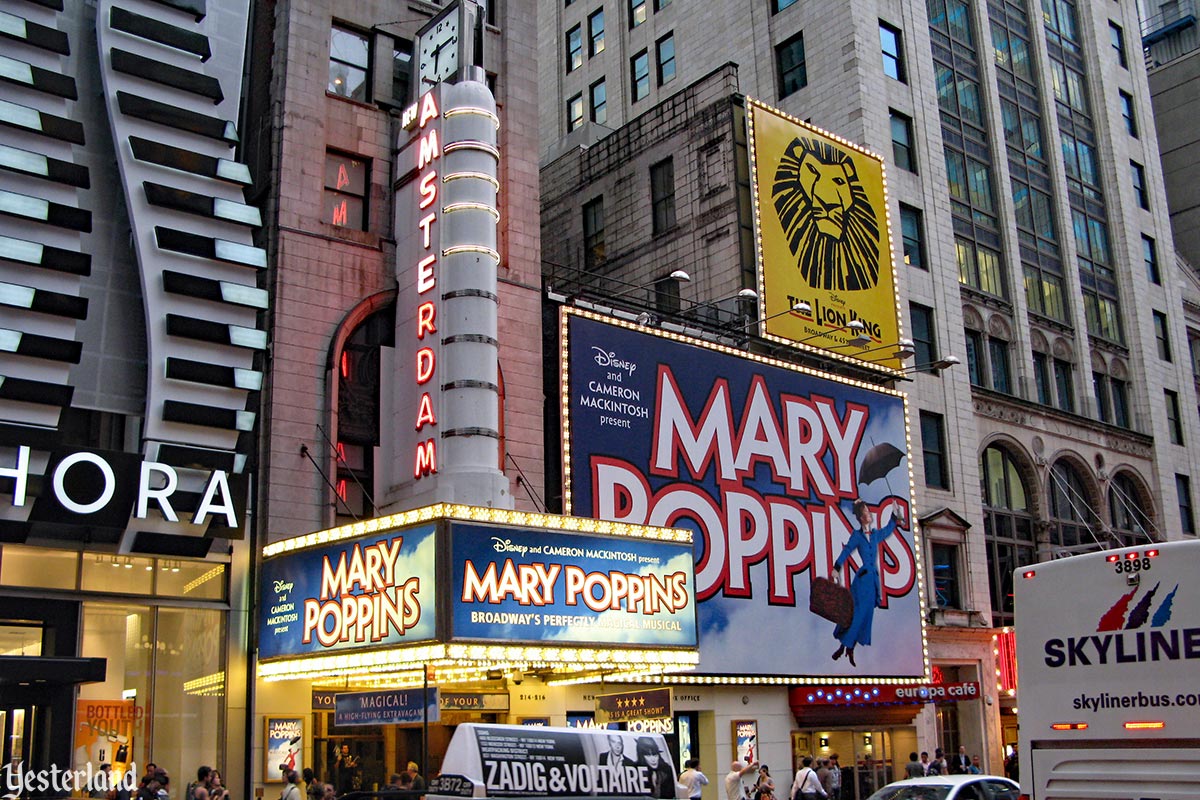
Photo by Werner Weiss, 2010 New Amsterdam Theatre on 42nd Street, New York |
||||
|
In late 1994, Disney Vacation Development became involved in a huge project spearheaded by Tishman Realty and Construction Company. There would be a mixed-use entertainment, lodging, and dining complex at 42nd Street and Eighth Avenue. Disney would operate an urban Disney Vacation Club; Tishman would operate a conventional hotel; other companies would add movie theaters, shops, and restaurants. On May 17, 1995, Real Estate Weekly published an article which began, “Governor George E. Pataki and Mayor Rudolph W. Giuliani last Thursday announced that ‘Dream Team Associates,’ an affiliate of Tishman Urban Development Corporation, has been selected to develop an 871,209 square-foot hotel and entertainment complex at the western end of the 42nd Street Development Project on the northeast corner of 42nd Street and Eighth Avenue. In addition, Disney Development Company will explore retail entertainment concepts for the location.” |
||||
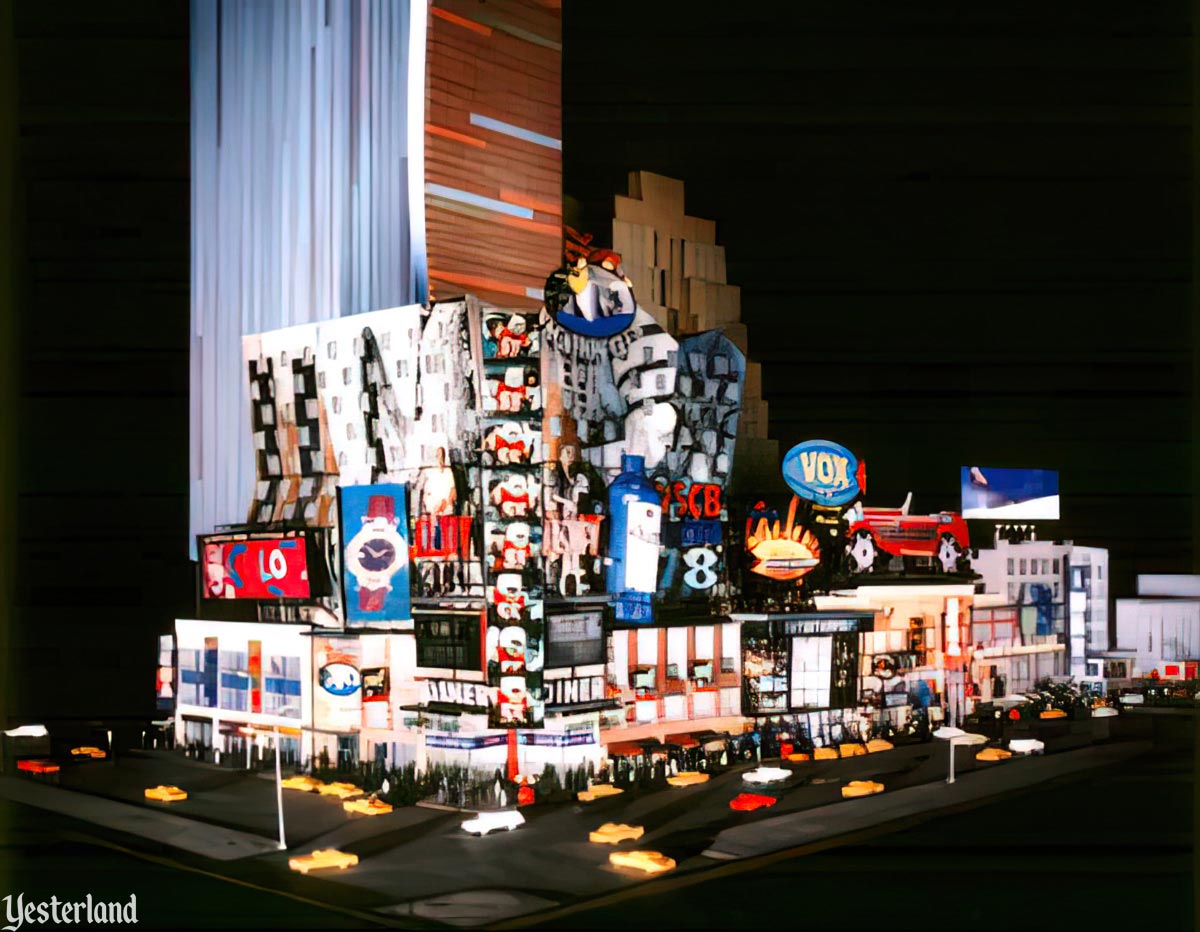
Rendering © Arquitectonica Oval Disney Vacation Club logo in 1995 publicity art |
||||
|
The article quoted Governor Pataki saying, “This $303-million project is the cornerstone of the redevelopment of 42nd Street. Tishman and Disney are known as visionaries. They realize that we are standing in the middle of the world’s greatest entertainment district. They will provide the bricks and the mortar, the imagination and the talent. New York State and New York City will provide the opportunity and the desire to work closely with the private sector to bring about change. Together we'll make a great team. Together we’ll make a great 42nd Street.” Disney and Tishman had a long history together. The Hilton at Downtown Disney is owned and operated by Tishman Hotels under a Hilton franchise. Tishman Construction was the prime contractor for EPCOT Center (now Epcot). At one time, Tishman even sued Disney under racketeering charges. Here’s what happened: As a result of work on EPCOT Center, Tishman had an agreement with Disney to build a new hotel near Downtown Disney. Disney’s then-CEO Michael Eisner nixed the plan. Tishman sued Disney. The warring parties reached an agreement. The location changed to a site closer to EPCOT Center. Architecture buff Eisner insisted that three architects would compete for the assignment. Eisner personally selected the design by Michael Graves, even though it exceeded Disney’s height guidelines. The result was the Walt Disney World Swan and Dolphin complex, owned and operated by Tishman Hotels, and affiliated with two Marriott (formerly Starwood) brands, Westin and Sheraton. |
||||
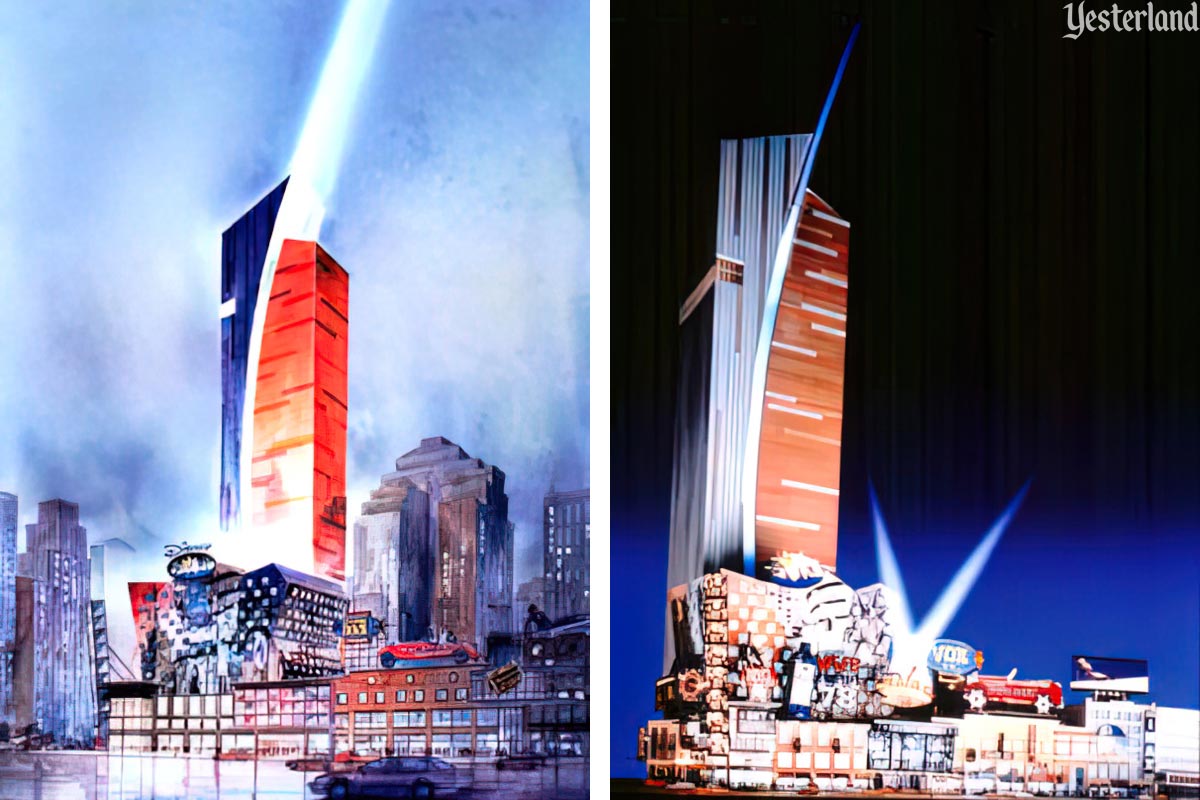
Renderings © Arquitectonica 42nd Street redevelopment hotel by day and night |
||||
|
By mid-1995, details emerged about the 42nd Street project. A July 26, 1995, article in Real Estate Weekly listed the following: “The plans include retail and entertainment attractions along 400 feet of 42nd Street, totaling 137,145 gross square feet; 10 to 12 super signs along 42nd Street and 8th Avenue; a potential Disney Vacation Club comprising 119,047 gross square feet, or 100 timeshare units; and a Tourist and Convention Hotel with 615,017 gross square feet, including 680 rooms and 50,000 square feet of meeting and banquet space.” Miami-based architectural firm Arquitectonica created a spectacular, rather theatrical design. The 47-story hotel would be bisected by a dramatic arc resembling the tail of a meteor. At its base, the Disney Vacation Club facility would be meteor-shaped. Its glass façade would suggest postcards of a New York vacation. A light show would explode into a spray of “pixie dust.” Arquitectonica is the same firm that designed Disney’s All-Star Resorts and Disney’s Pop Century Resort. Disney backed out of the 42nd Street project the following year. On April 19, 1996, the New York Times reported, “Despite a flurry of theater renovation projects and store openings around Times Square, one of the more offbeat ideas for 42nd Street—timeshare condominiums to be operated by the Disney Company—has been shelved.” The article quoted David L. Malmuth, executive vice president of the Disney Development Company, saying, “We have simply decided not to do timeshares in urban settings.” |
||||
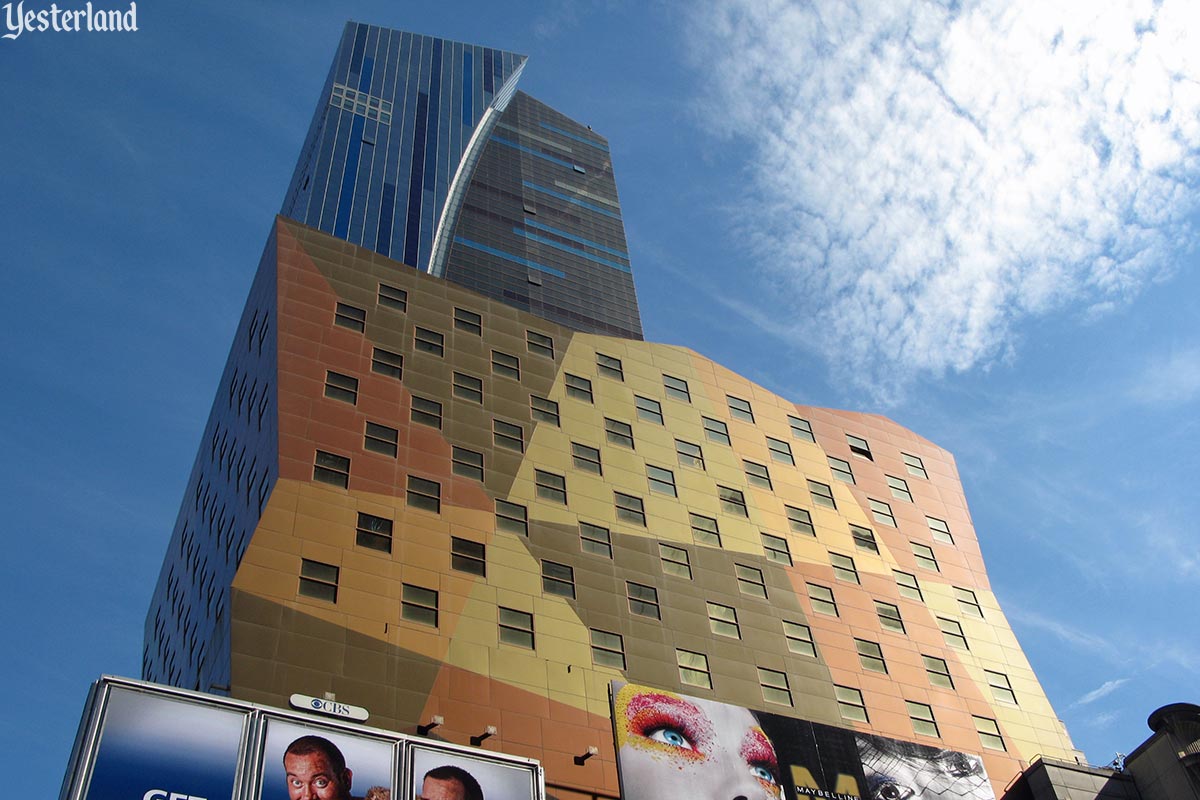
Photo by Werner Weiss, 2010 Tishman’s Westin New York at Times Square, resembling the concept artwork |
||||
|
The project was built without Disney. The hotel opened in 2002 as the 46-story, 863-room Westin New York at Times Square. It sits atop the 193,500 square-foot E Walk on the New 42nd Street, which now includes the Regal E-Walk 4DX & RPX movie theater, a 33,000-square-foot Target store (opening 2022), and, on its exterior, the largest LED advertising display outside of Times Square. The finished project looks similar to the renderings from 1995, except that the prominent DVC logo is, of course, not on the building. When Disney stepped away from the timeshare component, no other timeshare company took Disney’s place. |
||||
|
3. Disney’s Villas at Eagle Pines, Walt Disney World |
||||
|
Welcome to the Disney Vacation Club resort on a 61-acre site along the award-winning Disney’s Eagle Pines Golf Course, in the northwest part of the massive Walt Disney World Resort. Enjoy the charm and elegance of Florida’s “Golden Age.” |
||||
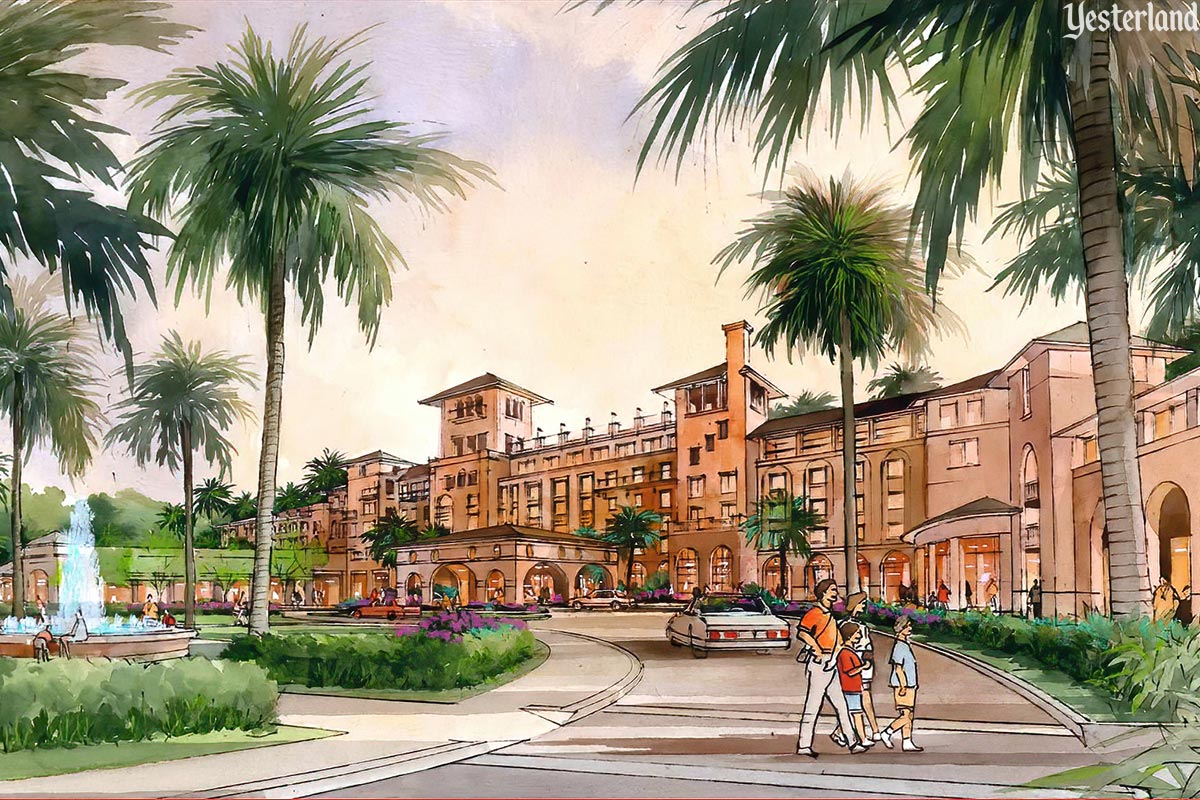
Rendering © 2001 Disney Proposed Disney Vacation Club resort at Eagle Pines Golf Course, 2001 |
||||
|
The resort looks as if it were designed by Addison Mizner (1872-1933), architect of Florida hotels and mansions where America’s early-20th-century elite could escape for the winter season. In places like St. Augustine, Boca Raton, and Palm Beach, Mizner’s Spanish Revival architecture combined Spanish, Moorish, Romanesque and Gothic forms, surrounded with tropical landscaping, to create an indigenous Florida style. (The actual architect for Disney’s Villas at Eagle Pines is Graham Gund, who also designed Disney’s Coronado Springs Resort and Disney’s Vero Beach Resort.) The main building of the resort is a six-story, 270,000-square-foot “inn.” That’s where you’ll find the check-in area, the restaurant and lounge, the feature pool with a themed slide, retail space, an arcade, a common living room area, and a health club. The “inn” building and ten four-story Villa buildings provide a total of 800,000 square feet of space for 600 vacation home accommodations. Your room could have a pool view, forest view, or golf course view. If you want some outdoor exercise, try the tennis and basketball courts. Your kids will enjoy the playground. There’s only one problem with the Villas at Eagle Pines. Although it was officially announced, it was never built. On July 23, 2001, just 40 days before the tragic events of September 11, 2001, Disney Vacation Development (DVD) announced plans for a huge timeshare resort at the Eagle Pines golf course, to be opened spring/summer 2004. |
||||
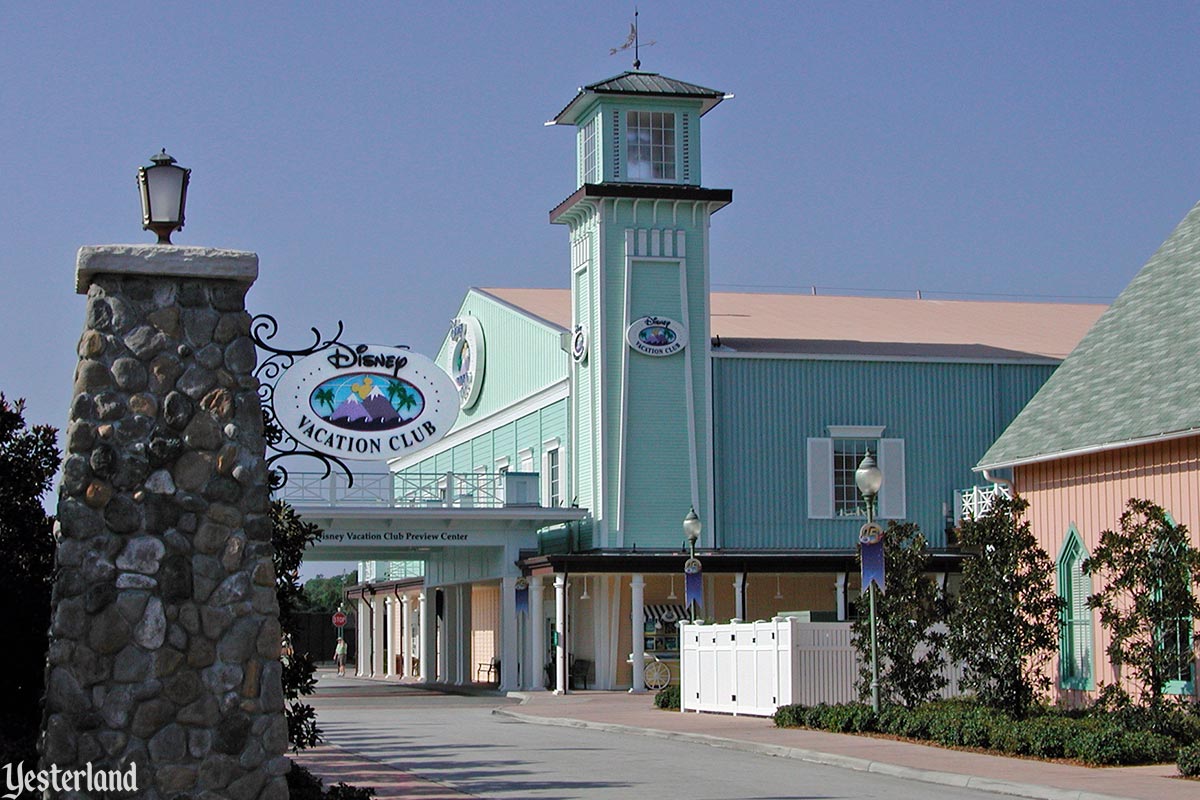
Photo by Werner Weiss, 2006 Former Disney Institute |
||||
|
After September 11 and the downturn in attendance at Walt Disney World, Disney shut down the already floundering Villas at the Disney Institute, a resort composed of various vacation apartments from the 1970s. The Disney Institute’s personal education, arts, and cultural enrichment programs for the public had already ended. The programs of the Disney Institute had been modeled after the Chautauqua Institution in Chautauqua, New York. A decade earlier, Michael Eisner had chosen renowned architect Thomas Beeby to design the Disney Institute’s core buildings, which would be built in the middle of the older vacation apartments. Although Beeby did not copy the Chautauqua Institution’s National Historic Landmark architecture, he captured the tranquil character of Chautauqua through architectural elements that one would find in upstate New York locations. On January 24, 2002, Disney officially announced a new Disney Vacation Club near Downtown Disney. It would reuse the existing Disney Institute main campus buildings and infrastructure. There was neither a name nor any concept art for the new resort. |
||||
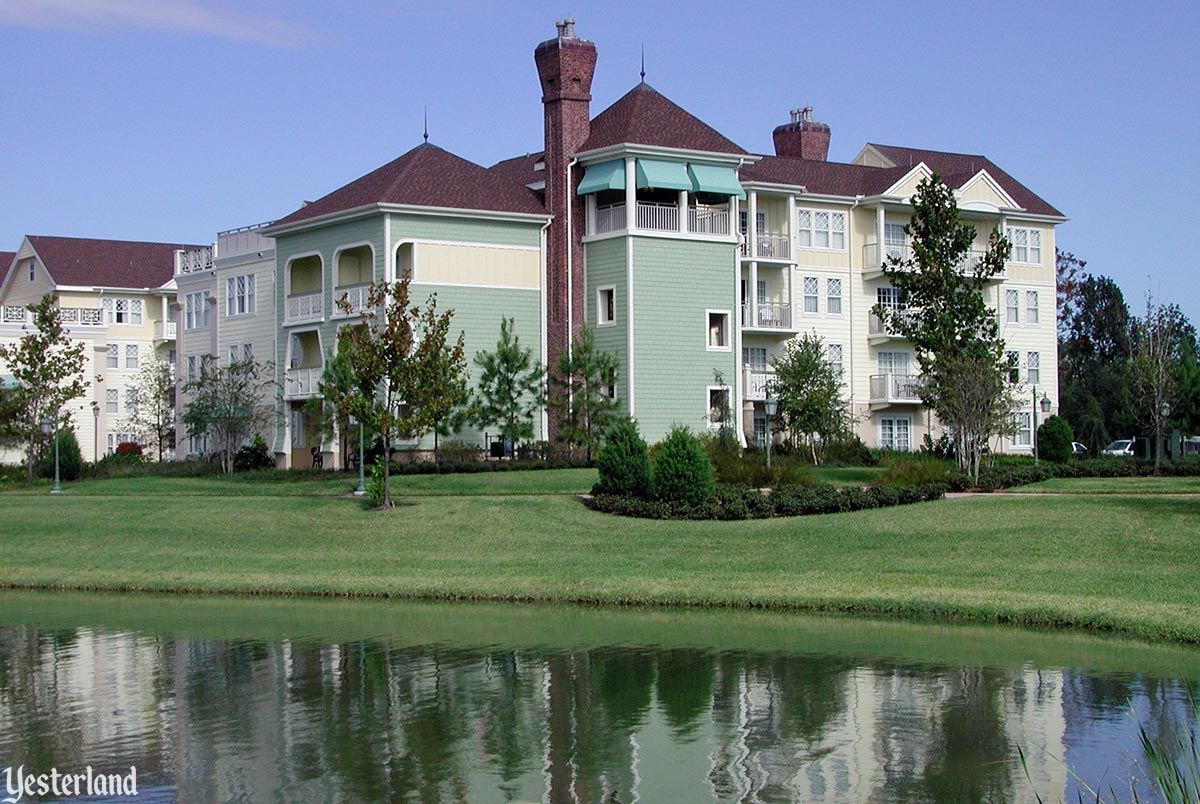
Photo by Werner Weiss, 2006 Continuing the Upstate New York theme |
||||
|
In September 2002, Disney announced the name Saratoga Springs Resort and Spa. Its theme would be the New York horse-racing town of Saratoga Springs. With Beeby’s relatively new Disney Institute campus becoming the core of the new Disney Vacation Club resort, the upstate New York theme made sense. The old vacation apartments would be demolished and replaced by themed timeshare buildings. Disney was still on target to open a huge, new, stand-alone DVC resort spring/summer 2004—just not the one themed to Florida’s “Golden Age.” |
||||
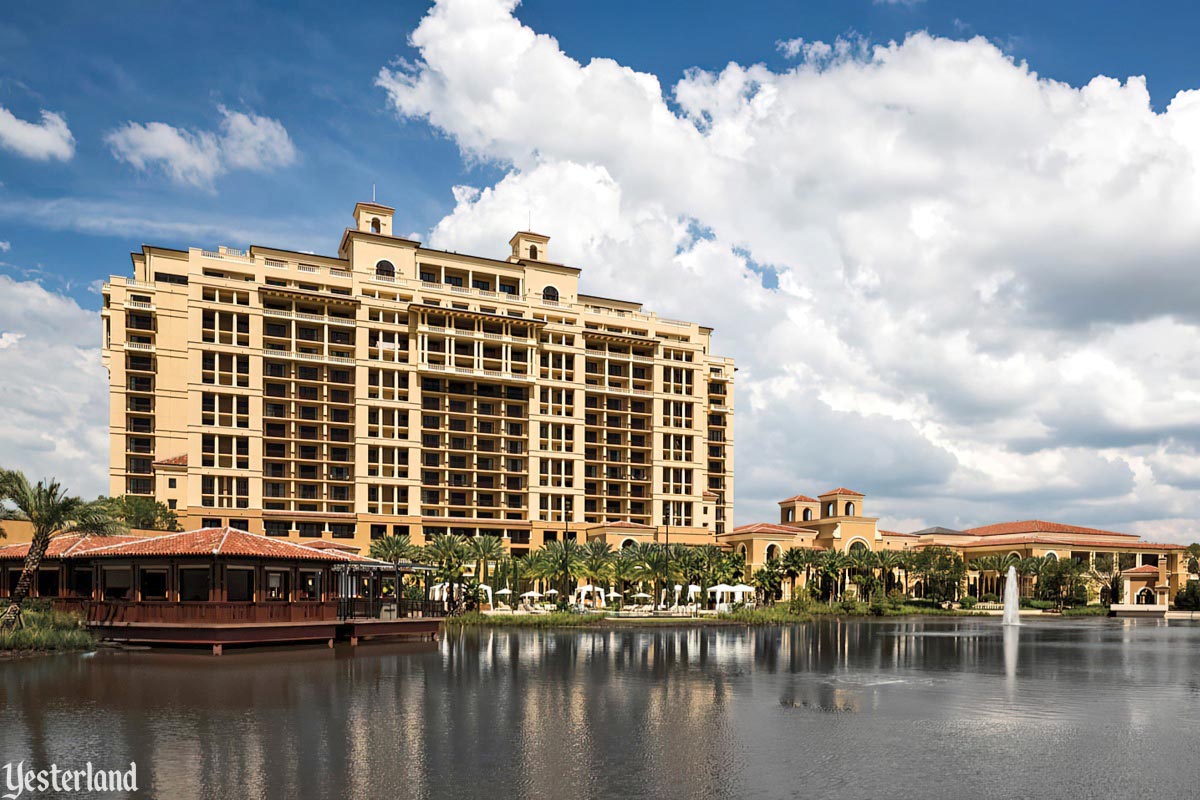
Photo © Four Seasons Hotels Limited Four Seasons Resort Orlando at Walt Disney World Resort |
||||
|
Disney never “unannounced” the Eagle Pines resort. For years, it seemed as if the plans for it could be dusted off some day. That ended in March 2007 when The Walt Disney Company announced that Four Seasons Hotels and Resorts would develop a luxury hotel and homes on a 900-acre site that included the Eagle Pines Golf Course, the Osprey Ridge Golf Course, and surrounding land. As part of that plan, the Osprey Ridge Golf Course would be upgraded, while the Eagle Pines Golf Course would be bulldozed for Golden Oak at Walt Disney World Resort, a development of luxury single- and multi-family vacation homes. |
||||
|
4. Reflections — A Disney Lakeside Lodge at Walt Disney World |
||||
|
Vacations should balance relaxation and excitement. Imagine a nature-inspired resort with contemporary architecture in a rustic, relaxing forest setting on Bay Lake, with the exciting Magic Kingdom just a boat ride away. The lobby would feature Pocahontas. A waterfront restaurant would be based on Princess and the Frog with Tiana’s amazing food. Characters from Bambi, Brother Bear, and Fox and the Hound would be right at home. You could walk to Disney’s Wilderness Lodge and Disney’s Fort Wilderness and their restaurants. |
||||
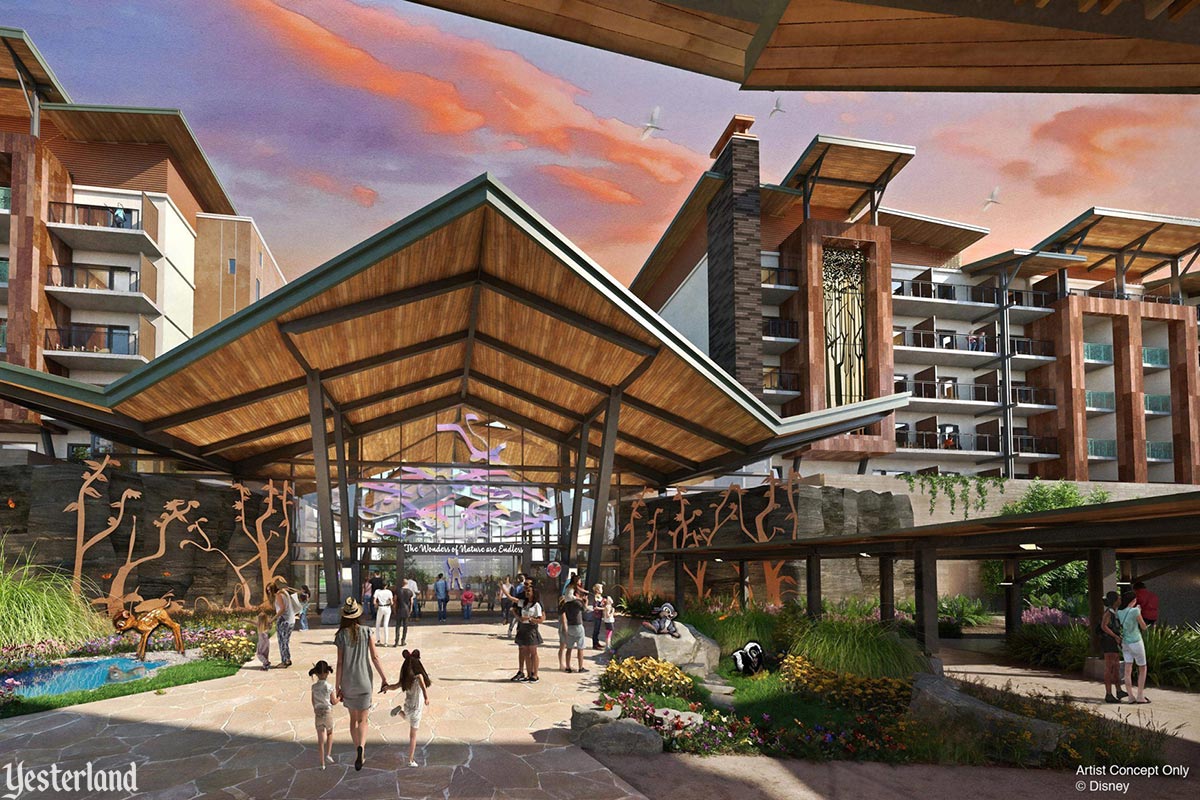
Artist Concept Only © Disney Reflections — A Disney Lakeside Lodge at Walt Disney World |
||||
|
That would be Reflections — A Disney Lakeside Lodge, a brand new Disney Vacation Club resort. Disney announced it in November 2018. It would replace River Country, the defunct water park that had been deteriorating since it closed permanently in 2001. |
||||
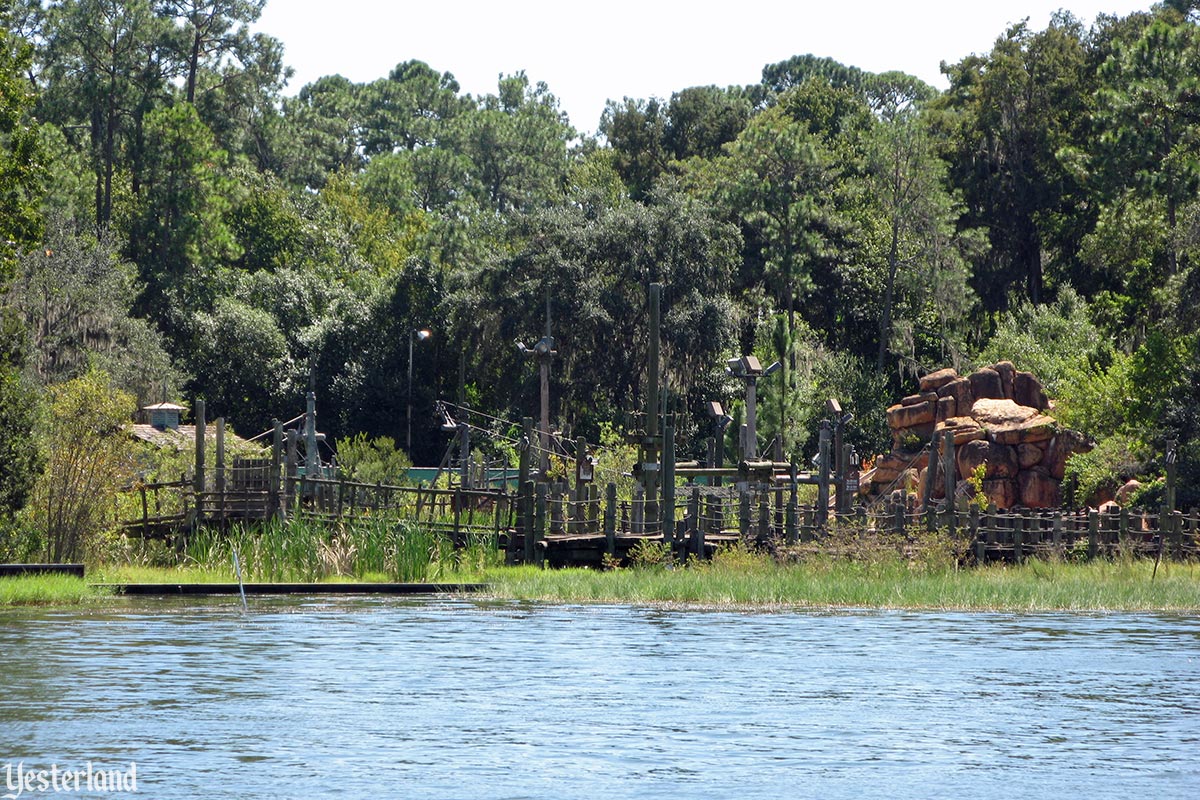
Photo by Werner Weiss, 2011 Remains of River Country’s Ol’ Swimmin’ Hole, part of the site for Reflections |
||||
|
Disney didn’t waste any time. River Country was demolished in March 2019. Site preparation for the new resort followed. By March 2020, construction should have started. But that never happened. |
||||
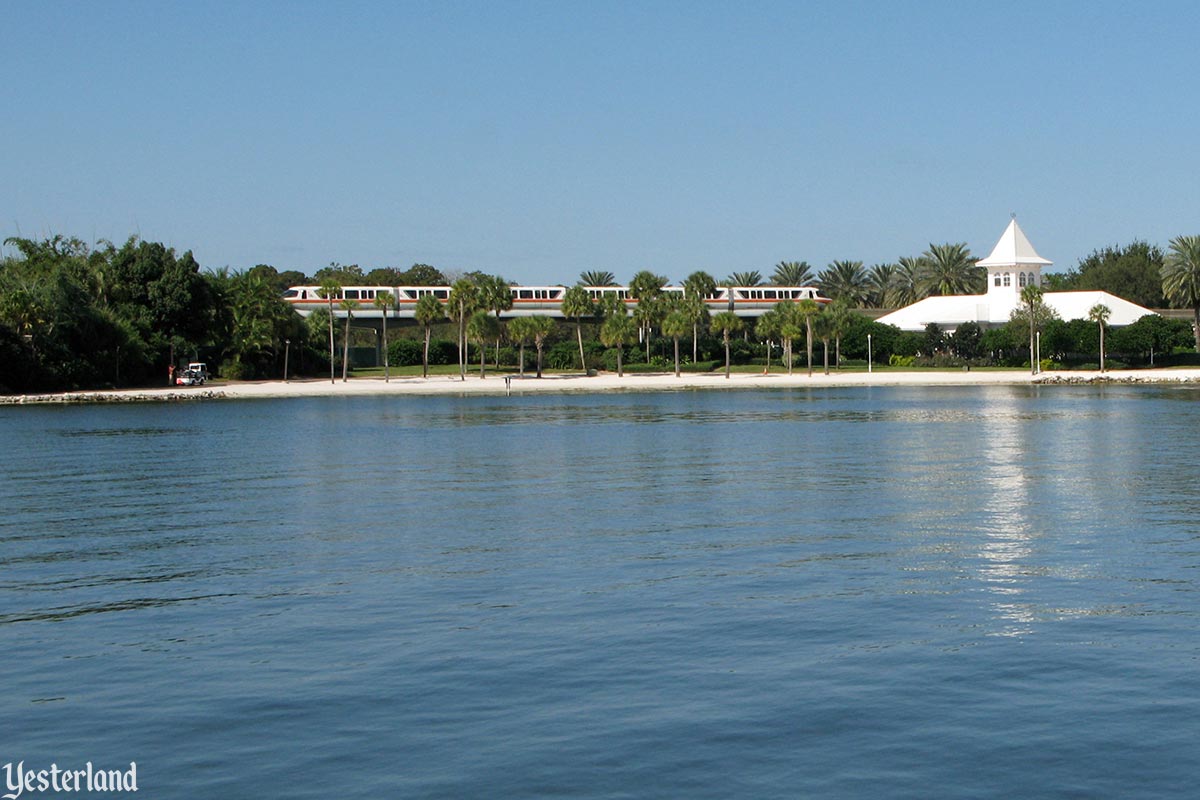
Photo by Werner Weiss, 2011 Site for new Disney Vacation Club villas at Disney’s Polynesian Village Resort |
||||
|
History was repeating itself. As at Eagle Pines, an unexpected event led to a change of plans. Instead of 9/11, it was the COVID-19 pandemic. In March 2020, work stopped on construction projects all over Walt Disney World and the parks and resorts shut down. Beginning with Disney Springs in May 2020, and continuing with the parks in July 2020, guests were cautiously welcomed back. Some projects resumed. Reflections was not one of them. |
||||
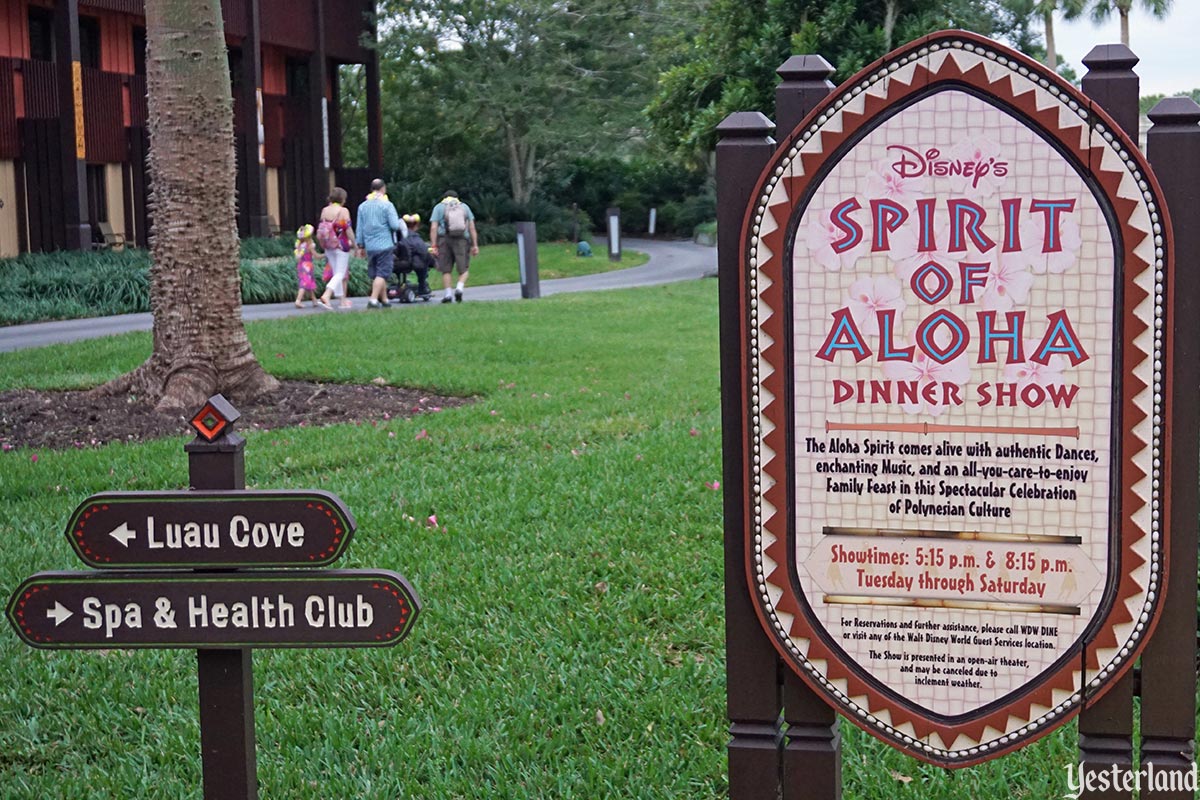
Photo by Werner Weiss, 2018 Spirit of Aloha sign at Disney’s Polynesian Village Resort |
||||
|
Once again, the event caused a new site to become available. Instead of the Disney Institute, it was Luau Cove at Disney’s Polynesian Village Resort—home of the Kaui Pono Polynesian Revue and Polynesian Luau from 1971 to 2003 and the Spirit of Aloha dinner show from 2003 to 2020. The show never returned after the COVID-19 shutdown. |
||||
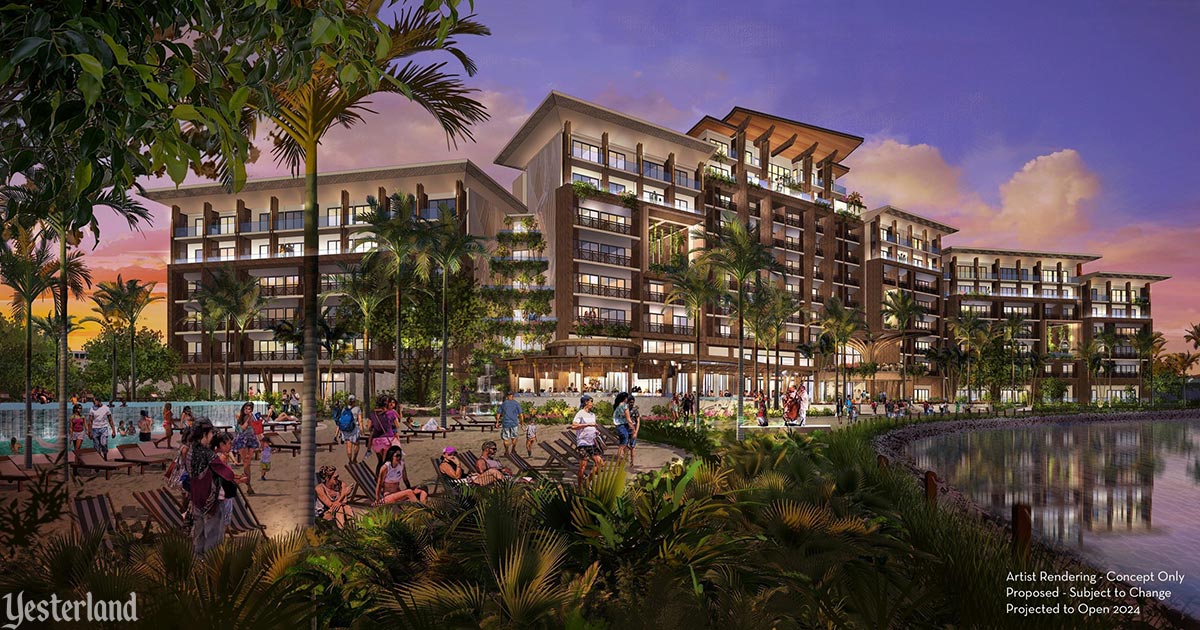
Artist Rendering - Concept Only © Disney New Disney Vacation Club villas at Disney’s Polynesian Village Resort |
||||
|
On March 15, 2022, Disney announced “proposed plans” to develop new Disney Vacation Club villas at Disney’s Polynesian Village Resort. The resort is already home to Disney’s Polynesian Villas & Bungalows, with 380 Disney Vacation Club villas, including two-bedroom Bora Bora Bungalows over the waters of the Seven Seas Lagoon. The concept art shows a tower completely unlike the rest of the Polynesian Village Resort. The Walt Disney Company—which gave us such amazing, immersive resorts as Wilderness Lodge, Grand Floridian, and Grand Californian—is now going with conventional 2020s hotel architecture, similar to the JW Marriott at Bonnet Creek—not bad architecture, just not what we expect from Disney. Undoubtedly, the tower will have Polynesian decor and use materials that look tropical—but, from a distance, the tower would look right at home in a suburban office park. The 2020s architecture is likely to look dated in ten years, while Disney’s fully themed resorts will continue to stand the test of time. In terms of architecture, the tower does not seem better or worse than Reflections. In fact, they are in many ways similar—and that also sums up what’s wrong with such designs for Disney resorts. Disney never “unannounced” Reflections but quietly removed details about it from its own websites. There’s still a chance Disney could take another look at the Bay Lake site some day. But, if that happens, let’s hope the current decision-makers at Disney have learned what it means to create a fully themed resort. |
||||
|
|
Click here to post comments at MiceChat about this article.
© 2022 Werner Weiss — Disclaimers, Copyright, and Trademarks Updated March 18, 2022 |
|||